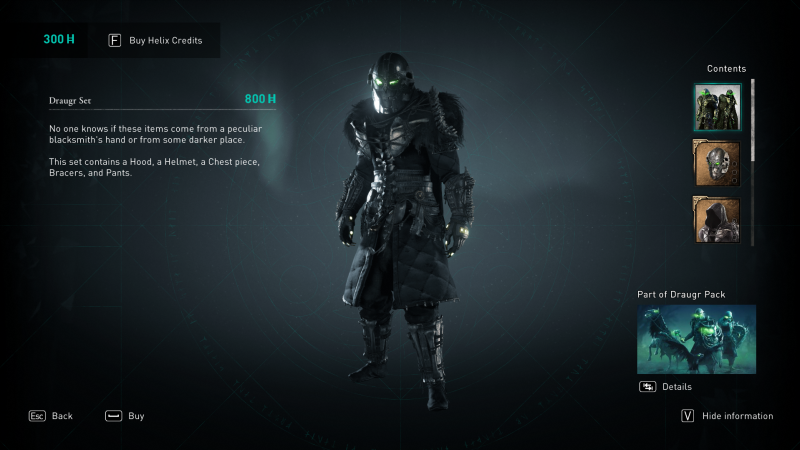Eriksson’s concerns come down to the price tag: Do players really want to pay more money—in this case around $20 for a set of armor—for in-game content when they’ve already spent $60 on the game itself?
“Generally, in the past Assassin’s Creed games, they drop a couple of expansions, too,” says Eriksson. “The last big season pass cost about $20. It included a new map, countless quests, and it costs around the same price” as just one of the new armor sets.
To go by the replies on Eriksson’s original Reddit post, a lot of AC fans feel similarly about Ubisoft’s microtransactions in the new game. One reply stuck out in particular:
“This is why I wait a year or so until it’s dirt cheap on Steam,” wrote /u/NoHelp_HelpDesk. “I’ll pay what I feel is an honest price if they’re going to nickel and dime me at every turn.”
Players just want the chance to customize the main character, Eivor, without feeling like they have to empty their wallets to do so.
“In Assassin’s Creed Valhalla, we are continuing to work hard to create the best possible experience for players,” Ubisoft said in a statement. “That includes offering a wide array of both free and paid content, which is regularly updated, with the goal of enabling players to make Eivor’s story their own through personalization.”
Microtransactions aren’t just about the cosmetic upgrades; often, they’re important to the actual gameplay. Dr. Ellen Evers, a marketing professor at the University of California, Berkeley who researches microtransactions, says that can take away a video game’s magic.
“Games in general, not just video games, have their own set of norms and rules that you’re supposed to follow,” says Evers. “It’s not against the law to steal money from the bank in Monopoly, but clearly you’re violating the spirit of the game.”
According to Evers, when a player spends money on in-game purchases, they stray from the game’s original purpose.
“The implicit assumption is that by playing the game and building up your character, you’re supposed to get better,” says Evers. “Microtransactions basically make the game easier. They violate those rules and norms that are part of the game.”
Some games have even become infamous for their “pay-to-win” use of microtransactions, like Star Wars Battlefront II or the mobile game Clash of Clans, where players could simply buy the most powerful upgrades and easily defeat their online opponents.
Certain microtransactions fall somewhere in between cosmetic enhancements and pay-to-win. The well-known mobile game Candy Crush Saga encourages purchasing what we’ll call “status boosting” microtransactions, where your online ranking may be influenced by how much you’ve spent on the game. While these in-game purchases can’t give you an edge against an opponent (Candy Crush is a single player game), they affect where you fall in the rankings.
“If you play Candy Crush, you can compare your ranking to other people,” says Evers. “And if your money gives you an edge [on the rankings] … that seems to be a situation where people get the most upset.”

9(MDAxOTAwOTE4MDEyMTkxMDAzNjczZDljZA004))

